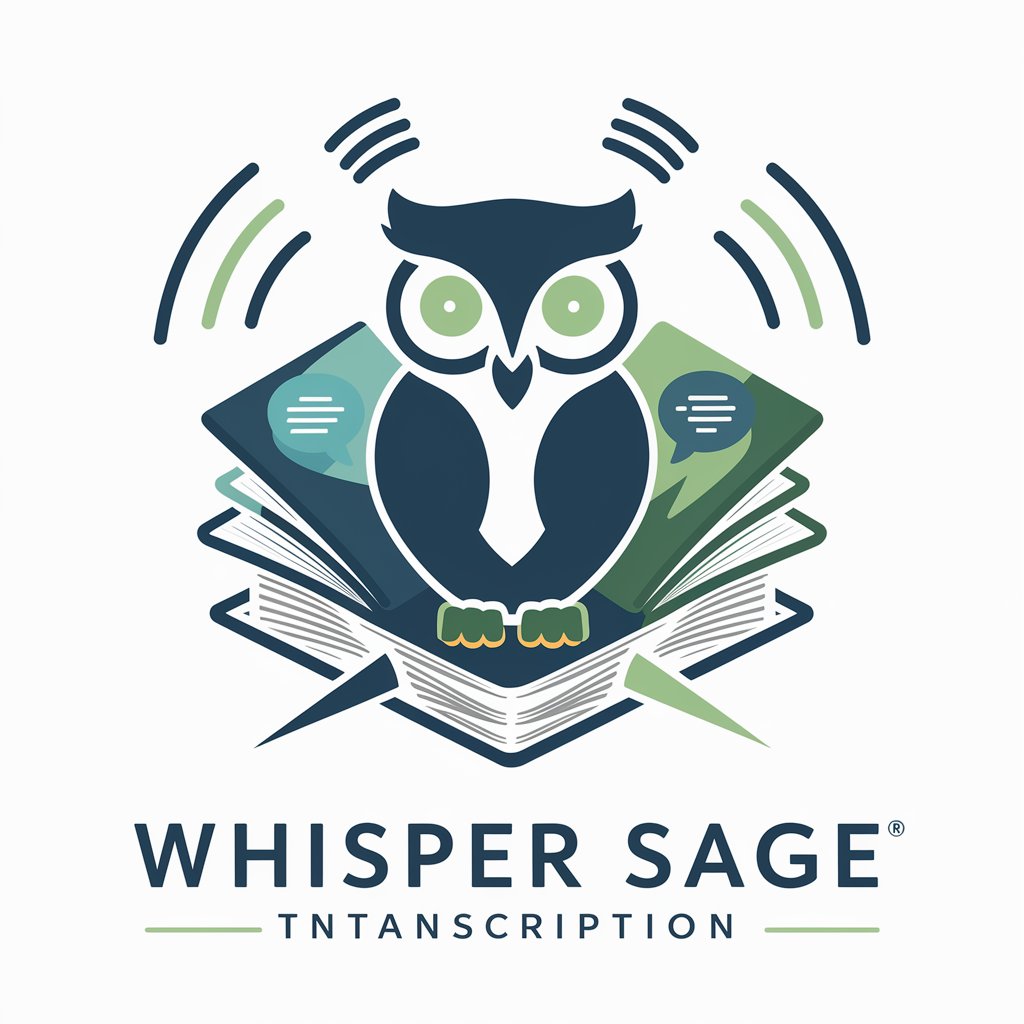
Whisper Sage - AI-powered Speech-to-Text

Hello! How can I assist you with Whisper API today?
Transform Speech into Text with AI
How can I integrate the Whisper API into my Python application?
What are the best practices for using the Whisper API for transcription?
Can you help me troubleshoot an issue with the Whisper API?
What advanced features does the Whisper API offer for speech-to-text applications?
Get Embed Code
Introduction to Whisper Sage
Whisper Sage is designed as an expert guide on using OpenAI's Whisper API for speech-to-text applications in Python. It assists users in integrating and utilizing the Whisper API to convert spoken language into written text efficiently. Whisper Sage provides support ranging from basic setup to complex troubleshooting and optimization, offering solutions tailored to the needs of developers at various skill levels. For example, a beginner might need help setting up their first transcription project, while an experienced developer might seek advice on handling large audio files or using advanced features like prompting to improve transcription accuracy. Powered by ChatGPT-4o。

Main Functions of Whisper Sage
Guiding Setup and Configuration
Example
from openai import OpenAI client = OpenAI() audio_file = open('path/to/audio.mp3', 'rb') transcript = client.audio.transcriptions.create(model='whisper-1', file=audio_file)
Scenario
A user new to the Whisper API wants to transcribe an audio file. Whisper Sage provides step-by-step Python code examples and explanations on how to initiate the transcription process.
Troubleshooting Common Issues
Example
If a user experiences errors due to unsupported audio formats, Whisper Sage suggests compatible formats and provides guidance on converting files using Python libraries.
Scenario
A developer struggles with audio file compatibility. Whisper Sage offers solutions, such as using PyDub to convert files to a supported format.
Optimizing Transcription Accuracy
Example
from openai import OpenAI client = OpenAI() audio_file = open('speech.mp3', 'rb') prompt='Hello, welcome to my lecture.' transcript = client.audio.transcriptions.create(model='whisper-1', file=audio_file, prompt=prompt, response_format='text')
Scenario
An academic needs high-quality transcriptions of lectures. Whisper Sage advises on the use of prompts to ensure the inclusion of specific terminology and improve the overall accuracy of the transcriptions.
Ideal Users of Whisper Sage Services
Developers
Developers integrating speech-to-text functionality into applications, especially those working on educational, accessibility, or media-based projects, will find Whisper Sage particularly useful. It helps them efficiently implement and manage the Whisper API, ensuring high-quality text output from audio inputs.
Academic Researchers
Academic researchers who need to transcribe lectures, interviews, or field recordings for qualitative analysis can utilize Whisper Sage to streamline their transcription process. The detailed guidance on handling large audio files and optimizing transcription accuracy is especially beneficial.
Content Creators
Content creators such as podcasters or journalists who regularly convert spoken content to text for subtitles, transcripts, or written articles can benefit from Whisper Sage's tips on enhancing transcription reliability and quality.

Steps for Using Whisper Sage
1
Visit yeschat.ai for a trial with no login or subscription to ChatGPT Plus.
2
Check the requirements for audio file types and size limits, ensuring your audio file meets these criteria.
3
Select the Whisper API endpoint appropriate for your needs: transcription or translation.
4
Use the provided Python code examples to integrate Whisper API calls into your application.
5
Leverage prompting techniques to improve transcription accuracy, particularly for specialized vocabulary or contexts.
Try other advanced and practical GPTs
jGPT
Empower your words with AI

AI Foundations GPT
AI-powered foundation for learning AI

Adaptive Personality Architecture
Empowering interactions with AI-driven personalities.

Quick ANSWER
Empowering precision with AI

ProfessorPDF
Empowering Your PDFs with AI

CISSP Study Strategy Guide
Empowering CISSP Success with AI

Reign
Empowering Coaches, Connecting Families

Appels d'offres
Revolutionize Tender Management with AI

Chicago Editor
Precision Editing with AI Power

Custom GPT Engineer
Empowering AI Interactions

Top 10 Tech of Metaverse
Navigating the Metaverse with AI-powered insights

Sofia
Empowering legal professionals with AI

Frequently Asked Questions About Whisper Sage
What file types are supported by Whisper Sage for transcription?
Whisper Sage supports mp3, mp4, mpeg, mpga, m4a, wav, and webm file types.
How can I improve the accuracy of transcriptions with Whisper Sage?
You can improve accuracy by using prompts that reflect the style and specialized vocabulary of the audio.
Is Whisper Sage capable of translating audio?
Yes, Whisper Sage can translate audio into English from any supported language, though it currently only outputs translations in English.
What should I do if my audio file exceeds the size limit?
For files larger than 25 MB, you need to split them into smaller segments using tools like PyDub before processing.
Can Whisper Sage handle multiple languages?
Yes, it supports transcription and translation in multiple languages, but only languages that maintain a word error rate below 50% are listed as supported.





